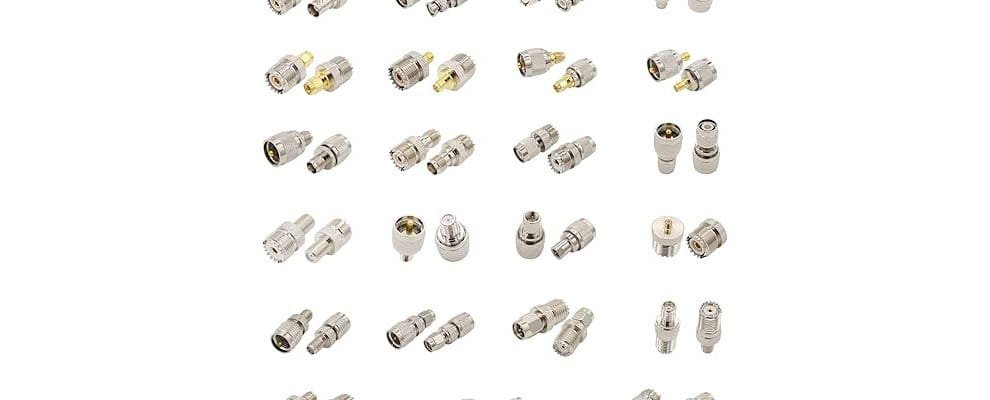What does an RF adapter do?

15
Jul
 Coaxial Cable Assembly
Coaxial Cable Assembly
 Microwave Test Cable
Microwave Test Cable
 Coaxial RF Connector
Coaxial RF Connector
 Coaxial RF Adapter
Coaxial RF Adapter
 Coaxial RF Termination
Coaxial RF Termination
 Coaxial RF Test Probe
Coaxial RF Test Probe
 Coaxial RF Attenuator
Coaxial RF Attenuator
 RF Switches
RF Switches
 Coaxial RF Power Dividers
Coaxial RF Power Dividers
In the fast-evolving world of radio frequency (RF) technology, a coaxial RF adapter is a vital component for seamless connectivity. Whether you’re setting up telecommunications systems, broadcasting equipment, or military devices, understanding what an RF to coax adapter does can save time and improve performance. This article explores its purpose, types, applications, and troubleshooting tips, ensuring you can choose and use the right adapter effectively.
An RF adapter is a small but essential device that connects different RF connectors, enabling signal transmission between incompatible interfaces. For example, an RF coaxial cable adapter might link a coaxial cable to a device with a different connector type, ensuring uninterrupted signal flow. These adapters are key to maintaining signal quality across various systems.
RF adapters provide flexibility and compatibility in RF setups. Without them, you’d be stuck with devices that have matching connectors, limiting your options and increasing costs. They’re especially valuable in industries like telecommunications and broadcasting, where quick, reliable connections are critical.
RF adapters come in various forms, each suited to specific needs:
These common types ensure broad compatibility across standard RF systems.
Beyond the basics, specialized adapters address unique challenges:
These options make RF coaxial adapter connectors versatile for niche applications.
Coaxial cables, designed to carry high-frequency signals with minimal loss, pair perfectly with RF adapters. A coaxial to RF adapter ensures the signal moves efficiently from the cable to the connected device, preserving quality and reducing interference.
RF adapters bridge the gap between devices with mismatched connectors. For instance, they might connect a coaxial cable to an RF receiver, enabling smooth signal transfer. This functionality is crucial in setups requiring high precision, like aerospace systems.
Picking the right coaxial RF adapter involves a few key considerations:
Avoid pitfalls like using mismatched connectors or ignoring impedance, which can degrade performance or damage equipment. Always verify specs before connecting.
In telecom, RF coaxial cable adapters connect antennas and base stations, supporting cell towers and satellite systems with reliable signal transmission.
Broadcasting uses RF adapters to link cameras, transmitters, and receivers, ensuring clear TV and radio signals without distortion.
Military and aerospace applications rely on RF adapters for radar, avionics, and secure communications, where failure isn’t an option.
Issues often encountered include:
To resolve these:
With 5G and IoT on the rise, RF adapters are getting smaller and more efficient, supporting higher frequencies and compact designs.
As connectivity demands grow, RF coaxial adapter connectors will evolve to meet new challenges, making it essential to stay informed on advancements.
A coaxial RF adapter is more than just a connector—it’s a solution for compatibility and performance in RF systems. From telecom to aerospace, its role is indispensable. Need help finding the perfect adapter? Contact us for expert guidance and top-quality products tailored to your needs.
 Coaxial Cable Assembly
Coaxial Cable Assembly
 Microwave Test Cable
Microwave Test Cable
 Coaxial RF Connector
Coaxial RF Connector
 Coaxial RF Adapter
Coaxial RF Adapter
 Coaxial RF Termination
Coaxial RF Termination
 Coaxial RF Test Probe
Coaxial RF Test Probe
 Coaxial RF Attenuator
Coaxial RF Attenuator
 RF Switches
RF Switches
 Coaxial RF Power Dividers
Coaxial RF Power Dividers Coaxial Cable Assembly
Coaxial Cable Assembly
 Microwave Test Cable
Microwave Test Cable
 Coaxial RF Connector
Coaxial RF Connector
 Coaxial RF Adapter
Coaxial RF Adapter
 Coaxial RF Termination
Coaxial RF Termination
 Coaxial RF Test Probe
Coaxial RF Test Probe
 Coaxial RF Attenuator
Coaxial RF Attenuator
 RF Switches
RF Switches
 Coaxial RF Power Dividers
Coaxial RF Power DividersNo account yet?
Create an Account